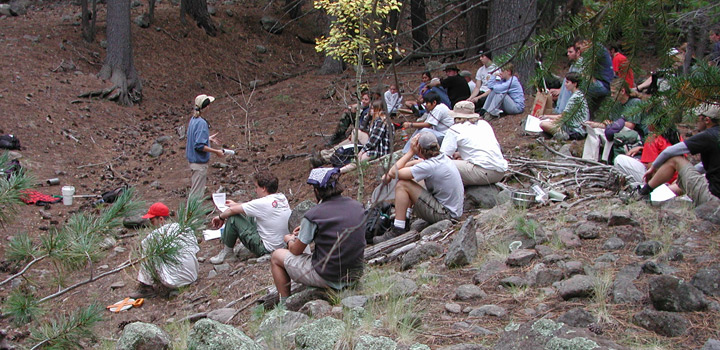2024 availability!
Research and education
The Merriam-Powell Research Station (MPRS) is used to support research and education by scientists and students from Northern Arizona University (NAU) as well as many other research institutions across the United States. These institutions include Arizona State University; Carthage College; College of Southern Nevada; Diné College; Harvard University; Penn State; University of Arizona; University of California, Davis; University of Illinois; University of Maryland; University of North Carolina; and the U.S. Geological Survey.
The proximity of MPRS to unique natural resources and ecological conditions is one of the primary attractions of MPRS to the research community. Research efforts include the following:
Climate Change Accordion Closed
Common Gardens Accordion Closed
Ecosystem Interactions Accordion Closed
Courses and workshops
In addition to serving as a base of operations for visiting researchers, MPRS facilities are available for use by university classes to provide students with valuable field experiences. Examples of the types of classes that have used the facility and the activities supported include the following:
- NAU’s environmental science Research Experiences for Undergraduates program, which is funded by the National Science Foundation to support research participation by undergraduate students, annually holds a 4-day workshop at MPRS for students from community and tribal colleges. Students are taught basic field research techniques during the 4-day workshop.
- As part of a new course, MPRS also hosted a day-long training for K–12 teachers designed to give them the knowledge needed to effectively use arthropods to demonstrate scientific concepts in their classrooms.
- A University of Oklahoma course on the geology and botany of the Colorado Plateau used MPRS as a base of operations when the class visited the region.
- A class from the University of Delaware Botanical Garden and Arboretum Program stayed at MPRS while visiting The Arboretum at Flagstaff.
Native American Partnerships
The Colorado Plateau is home to a diverse range of Native American tribes. MPRS has partnered with tribal institutions and scientists to support research and training activities. For example, Diné College, a public institution of higher education chartered by the Navajo Nation, uses MPRS facilities when its students visit Flagstaff for training in GIS and molecular genetics. Students from tribal and community colleges are introduced to field research at MPRS through NAU’s environmental science Research Experiences for Undergraduates program. Additionally, since 2009, MPRS is the base of operations for a collaborative effort between Harvard, Navajo, and NAU scientists to identify new ant species and to catalog ant diversity.
